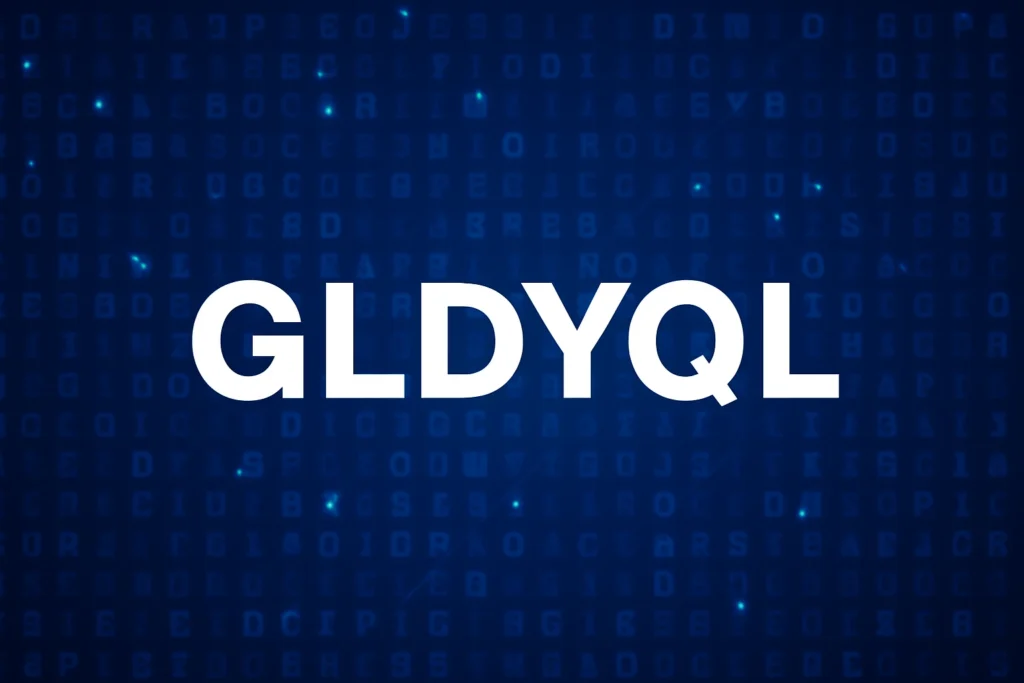In today’s fast-evolving digital world, new identifiers and innovative naming conventions are constantly emerging. These identifiers don’t just serve technical purposes — they have become powerful symbols of individuality and creativity. One such example is GLDYQL, a six-character alphanumeric string that embodies uniqueness, modern identity, and digital experimentation.
At first glance, GLDYQL might seem like a random set of letters. However, its growing recognition in online discussions highlights how people use such identifiers to carve out distinct digital personas. Whether in gaming, development, or creative platforms, identifiers like this allow users to define themselves in new, unconventional ways.
This reflects the same innovative spirit driving projects like Repmold’s exploration of sustainable manufacturing, where technological progress and individuality merge to build a smarter, more connected future.
A digital identity can be defined as a profile or set of data attributes that describe a person, system, or device within a digital ecosystem. According to IBM’s overview of digital identity, understanding this concept is key to grasping how our online activities are connected to real-world presence. Within that context, identifiers like GLDYQL represent a creative extension of digital self-expression.
What is GLDYQL?
At its core, GLDYQL is a unique identifier — a string of characters with no predefined meaning but endless potential for application. It can act as a username, tag, placeholder, or even a symbolic alias for online personas.
Unlike traditional usernames, which often rely on personal details, GLDYQL stands out for its randomness and neutrality. It offers both privacy and distinction — two traits increasingly valued in digital spaces. Users seeking to protect their identity can use such random identifiers while maintaining a recognizable online presence.
As Coursera explains, unique identifiers (UIDs) are codes assigned to data, people, or objects to distinguish them from one another. They are the foundation of many modern systems — from databases and blockchain networks to social media platforms. GLDYQL mirrors this logic: it’s a self-contained symbol of individuality that fits neatly into any system that values uniqueness and consistency.
This approach to combining creativity and technology parallels the mindset behind Trucofax’s explanation of complex tech in human terms. Just as Trucofax simplifies advanced topics for everyday users, identifiers like GLDYQL make abstract digital concepts more relatable and personal.
Uses of GLDYQL
While GLDYQL doesn’t have a singular definition, it can represent different ideas depending on context:
-
Gaming Alias: Gamers often seek unique usernames to stand out in multiplayer environments. A name like GLDYQL is rare, easy to remember, and unlikely to be taken, giving players a distinct edge in building a recognizable identity.
-
Tech Placeholder: Developers use random identifiers to label code, data entries, or encrypted files. Using GLDYQL as a placeholder ensures there are no conflicts with existing values — a common requirement in secure software testing.
-
Creative Pseudonym: For artists, writers, or creators, anonymity is sometimes empowering. Using identifiers like GLDYQL allows them to publish or share work under a distinct persona that separates their digital identity from their personal life.
-
Blockchain Tag: In blockchain ecosystems, random identifiers often represent wallet addresses, tokens, or metadata tags. GLDYQL could hypothetically serve as a symbolic digital signature within such decentralized environments.
The Rise of Unique Identifiers in Online Communities
The growing emphasis on individuality has driven people to look beyond ordinary usernames. Across social media platforms, coding repositories, and online forums, unique identifiers like GLDYQL are being used to build credibility, privacy, and long-term recognition.
This mirrors a wider digital transformation — one where personalization is no longer optional but essential. Having a unique handle reinforces authenticity and helps maintain consistent branding across platforms.
In business and tech contexts, maintaining consistency and trust is critical — just as PLG Supplies focuses on maintaining quality and consistency. Similarly, individuals now rely on consistent identifiers to maintain cohesive online reputations. A well-chosen name or code becomes a bridge between different parts of a digital presence: from social profiles to blockchain wallets, from gaming IDs to professional accounts.
The Importance of Digital Identity
The concept of digital identity extends far beyond usernames or accounts. It represents how we interact, transact, and express ourselves online. In a world driven by data and automation, your identifier — whether a name, handle, or string like GLDYQL — is your gateway to digital trust.
IBM’s digital identity insights explain how this concept shapes cybersecurity, user authentication, and data management. Each identifier links back to a unique profile, ensuring systems can recognize and verify users without exposing unnecessary personal information.
As privacy concerns rise, random identifiers are becoming powerful tools for self-protection. They let people engage fully online without oversharing, maintaining both individuality and anonymity.
In many ways, GLDYQL exemplifies this balance — it’s distinct enough to be personal, yet abstract enough to remain private.
The Future of Digital Identity
As digital ecosystems expand, the importance of strong, verifiable, and privacy-friendly identifiers will continue to grow. Emerging technologies like decentralized identity (DID) systems and blockchain authentication are already reshaping how people prove ownership and manage access online.
Identifiers like GLDYQL offer a glimpse into this future — one where users can control their online presence without relying on centralized authorities. From social networks to cloud platforms, personalization is moving toward decentralization and user autonomy.
The integration of creative identifiers will help people build digital brands that are flexible yet secure, individual yet anonymous. Whether it’s gamers using distinct names, developers tagging code, or entrepreneurs shaping online brands, identifiers like GLDYQL will remain relevant.
Conclusion
The rise of unique identifiers like GLDYQL marks a shift in how we define ourselves online. No longer are digital identities bound by email addresses or profile pictures — they’re now evolving into more abstract and flexible representations.
Just as sustainability, innovation, and human connection drive technological advancements like Repmold’s sustainable manufacturing model, identifiers like GLDYQL drive innovation in digital identity. They blend creativity with functionality, enabling people to express individuality while protecting privacy.
As the internet becomes even more interconnected, the future will belong to those who can manage and protect their digital identities effectively — and GLDYQL stands as a simple yet powerful symbol of that transformation.
Frequently Asked Questions
1. What is GLDYQL?
It’s an alphanumeric string used as a unique identifier across digital platforms, offering distinction, anonymity, and creative freedom.
2. Can I use GLDYQL as my username?
Yes — it’s likely available and can serve as a rare, memorable online identity.
3. How does GLDYQL relate to digital identity?
It represents individuality and anonymity, mirroring the importance of self-defined digital presence.
4. Does it have relevance in blockchain?
While not yet adopted officially, identifiers like GLDYQL could be used as symbolic tags, tokens, or smart contract IDs.
5. Why do unique identifiers matter?
As Coursera explains, they are essential for organizing and distinguishing data in today’s digital systems — and in a world driven by data, that distinction matters more than ever.



